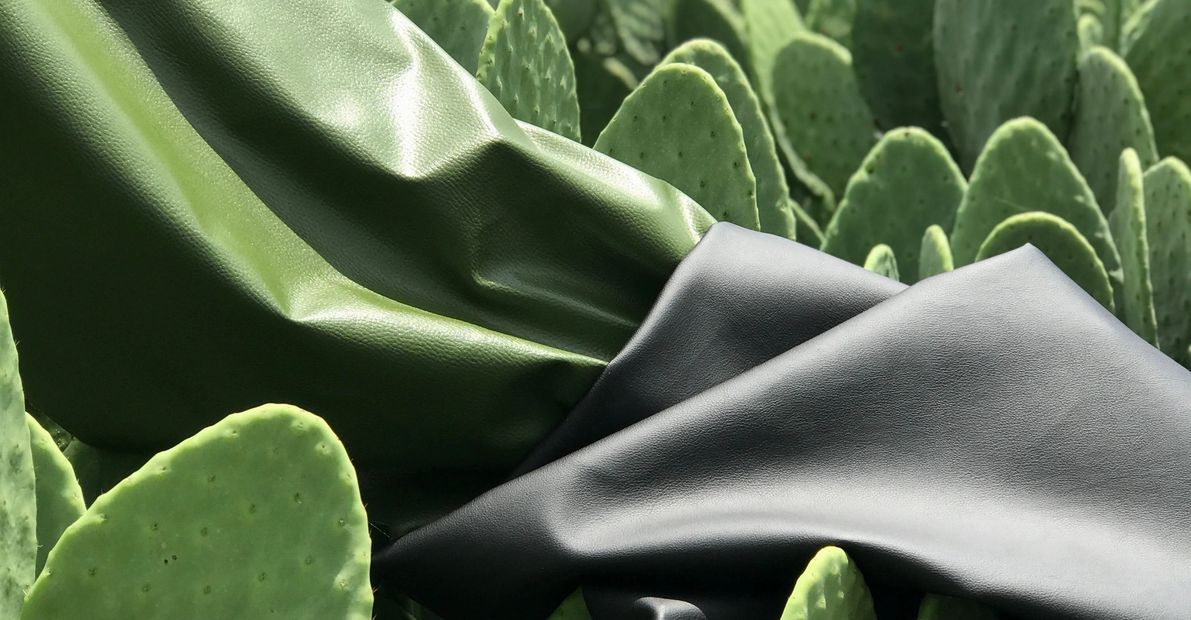For some time now, cactus leather from the company ADRIANO DI MARTI and its product desserto from Mexico has been used and celebrated in the fashion world as a sustainable alternative to leather. The founders Adrián López Velarde and Marte Cázarez have developed a patented process for producing cactus leather.
Cacti are natural, renewable resources and part of life in Mexico. Cacti grow always and everywhere in their home region. The founders own their own cactus farm, which they can expand to 40 hectares. They work with local farmers who replant cacti on fallow land and thus regenerate the soil. Cacti are very hardy and frugal and grow where no other plants do. They are also a natural CO2 reservoir. They are CAM plants (Crassulacean Acid Metabolism), their metabolism protects water and they do not work during the day and produce chlorophyll like most plants. The cactus absorbs CO2 during the night, because only when the environment is fresh does the plant open its stoma and capture CO2, produce oxygen and absorb the water present in the atmosphere, which normally comes from the morning dew. The cacti use the rainwater to grow. Only 200 litres of water are needed to grow one kilogram of cactus biomass.
To produce the catus leather, the mature leaves of the plant are cut off without damaging the plant itself. Every 6-8 months, one plant can be harvested. The leaves are dried by the sun’s energy. A powder is made from the dried cactus leaves. The cactus powder obtained is mixed with recycled polyester and applied to a cotton fabric. It takes about 3 cactus leaves to make one running metre of desserto. Waste produced during the manufacturing process is sent directly to the food industry. So far, the vegan leather alternative is still quite expensive. In addition to local production, it is important for the founders to be able to supply small and medium-sized companies with the fabric.
The catus leather feels light and comfortable and is breathable. It comes in various colours and structures. The durability is about ten years.
Meanwhile, the leather is also used by brands such as Miomojo or ZTUDIO 8B from Berlin, which offer handbags made of the leather. Karl Lagerfeld is one of the better-known brands. Shoes made from cactus leather are offered by CLAE from Los Angeles, for example. Clothing such as trousers are offered by DAEDWOOD from Sweden or WANKA Berlin. Last but not least, fashion products made of cactus leather could be purchased from the Swedish company H&M as part of the Innovation Science Story, which seem to have been well received by customers.
Cactus leather is a very good alternative to replace leather goods made from animals. Just like apple, pineapple or orange leather, they offer enormous potential to contribute to environmental protection and fair working conditions free of harmful substances. The impact of the leather industry on the environment and people can be read here.
The success of sustainable materials depends heavily on their acceptance by the end consumer. We hope that the vegan leather alternative will catch on. Keep it up!
desserto.com.mx
photo by ADRIANO DI MARTI


